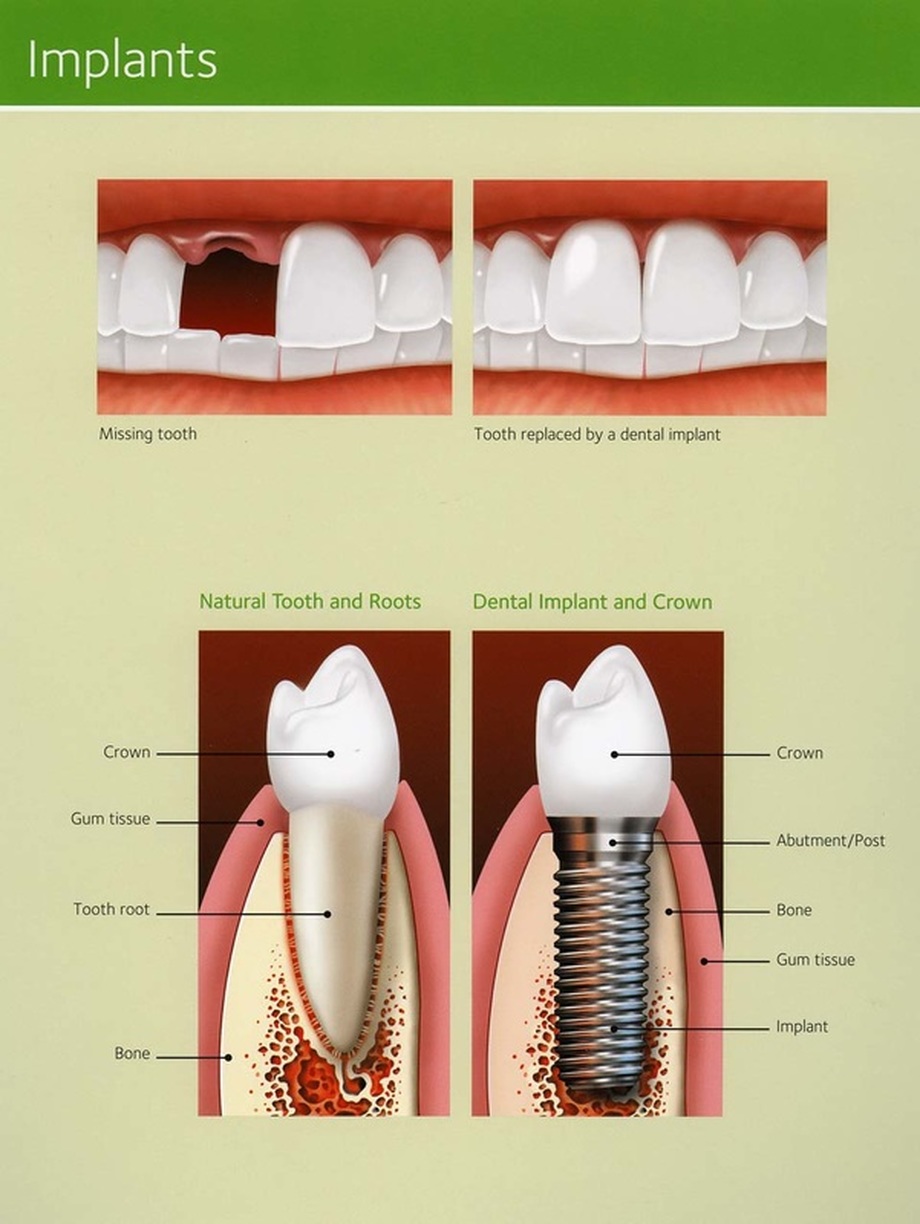Implants
|
A bridge replaces a missing tooth by connecting a fake tooth to crowns on the teeth adjacent. Therefore, a bridge cannot be used to replace the last tooth in the mouth. The crowns on both the tooth in front of and behind the missing tooth, as well as the replacement tooth, form one solid unit that returns normal chewing ability to the area.
The procedure for a bridge is identical to that of a crown preparation, except that two or more teeth are prepared for crowns. Again, impressions are taken at this first preparation appointment, then two weeks later the bridge is seated and cemented once the proper fit is verified. Therefore, with a bridge, a missing tooth can be replaced permanently within two weeks. A bridge does have some drawbacks, however. First, it can be difficult to clean around because floss cannot be used between the teeth in the bridge because they are splinted together. Therefore, the floss must be threaded underneath the bridge near the gums to ensure proper hygiene. Second, a bridge requires that the adjacent teeth are prepared for crowns, even if they are perfectly healthy teeth. If these drawbacks are a significant concern, then an implant is usually a better option to replace the missing tooth. |

